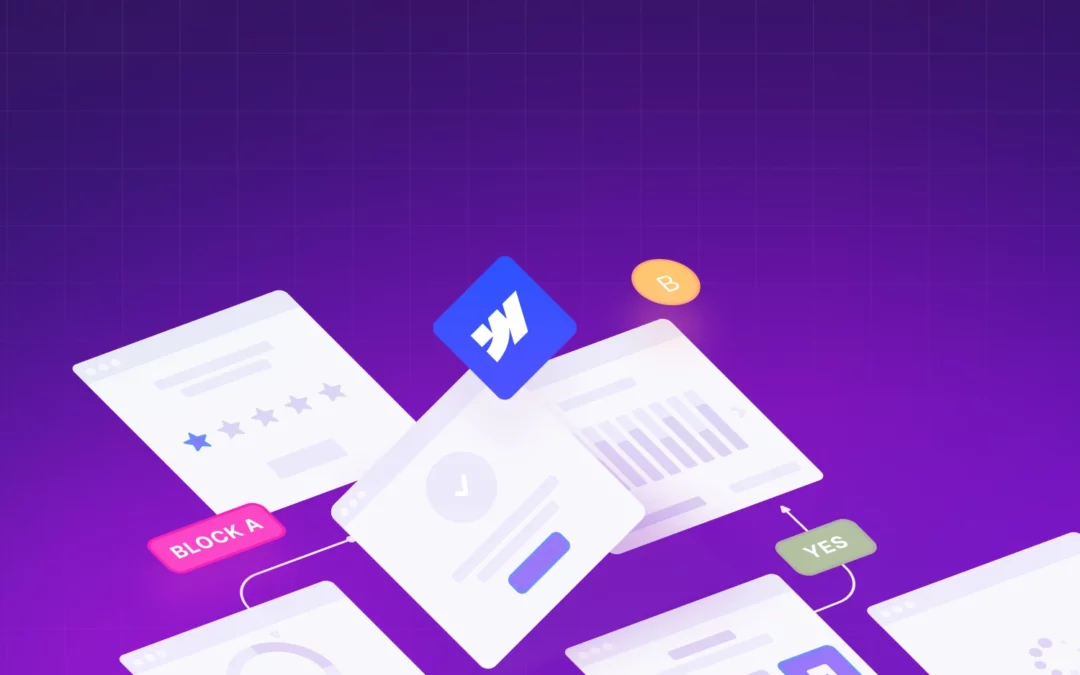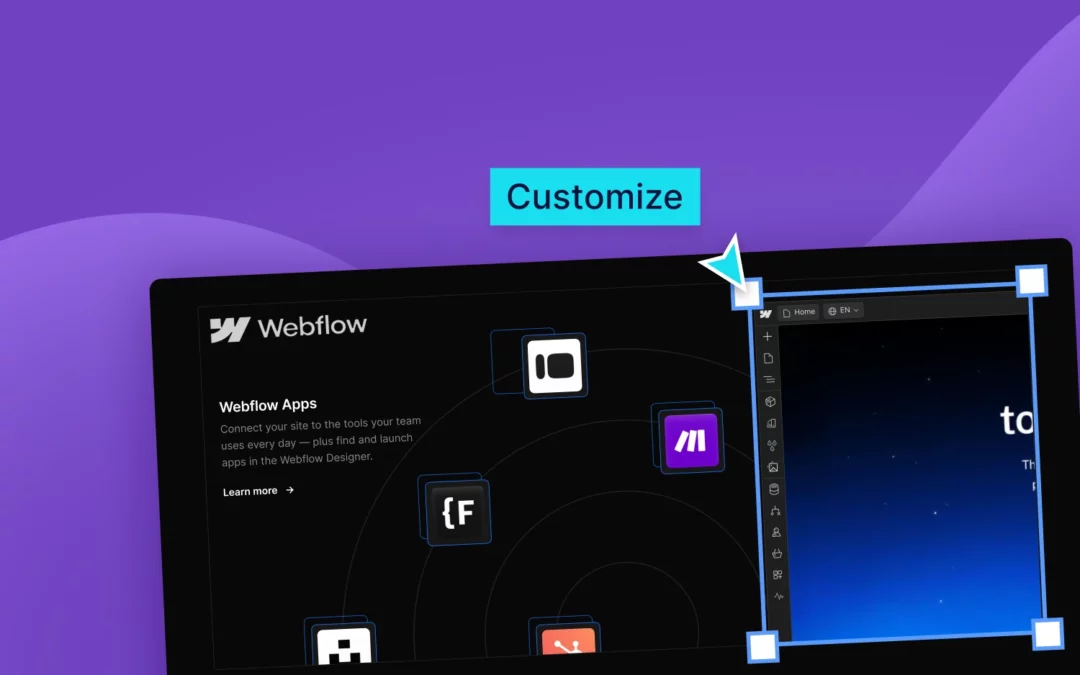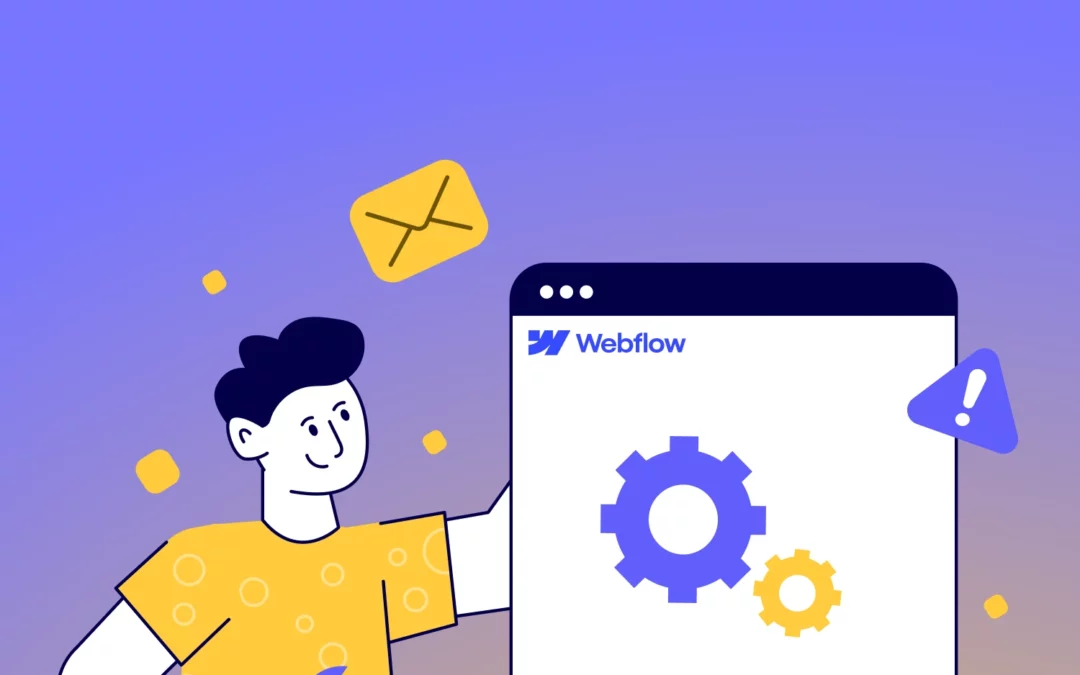Approximately 175 new websites are launched every minute, and around 252,000 websites are launched daily. Just think about how fast this industry is moving. So, your website needs to be more unique to attract attention. As we look ahead, some exciting Webflow design trends are emerging that will dominate in 2025. These trends will make websites better for visitors. They also add movement, 3D effects, and natural shapes to make sites feel friendly and alive.
In 2025, websites need to be easy to use and fun to explore. People expect websites to work smoothly and feel personal. Webflow is currently the leading website builder. Webflow designers focus on clean designs that load quickly and look great on any device. If you want your site to be attractive this year, it’s important to know the latest Webflow design trends. These trends make websites simpler, faster and more interesting.
In this article, I will explain 5 webflow design trends that will dominate in 2025, along with template examples.
1. Micro-Interactions & Thoughtful Motion Design
Micro-interactions are small animations triggered by user actions. This is like a button changing color on hover or highlighting while typing. These small effects give instant feedback. This makes the site easier to use and more enjoyable. It helps users know what’s clickable, confirm actions, and guide navigation.
Adding simple animations like button hovers or form highlights makes your website feel smooth, friendly, and polished. Thoughtful motion adds personality without overwhelming visitors.
Quick examples you might recognize:
- Buttons that gently bounce or change color on hover.
- Forms that highlight the active field to guide typing.
- Fun animations to celebrate task completion, such as confetti or icons flying across the screen.
- Error messages that shake or show playful animations.
Template Examples: Let’s explore some templates with Micro-Interactions & Thoughtful Motion Design.
2. Immersive 3D Elements & Parallax Scrolling
Websites in 2025 use 3D graphics and parallax scrolling to make pages feel more real and exciting. These features will add depth and dynamism. This turns flat screens into vibrant, interactive spaces.
What Are 3D Elements & Parallax Scrolling?
3D Elements: These are images or objects on a website that look three-dimensional. They might spin, move, or let you see different angles. You often see them in product showcases or interactive backgrounds. 3D elements help users feel more connected to what they see.
Parallax Scrolling: This is a special effect where the background moves slower than the foreground as you scroll down the page. It creates an illusion of depth, almost like the website has layers. This effect makes pages more attractive and guides your eyes smoothly through the content.
Why Use These Effects?
- 3D product displays: Let people spin, zoom, and check out products in a virtual space.
- Animated backgrounds & elements: Subtle or big 3D animations that add depth and movement.
- Storytelling with scrolling: Content that pops up or changes as someone scrolls down, making a story unfold.
- Fun mouse cursors: Custom cursors that change shape or react when you move your mouse, adding a playful touch.
Template Examples: Let’s explore some templates with 3D Elements & Parallax Scrolling.
3. Organic Shapes & Nature-Inspired Design
These days organic shapes inspired by nature are reshaping web design. Instead of grids and sharp edges, designers use smooth curves, flowing lines and irregular shapes to create websites that feel natural. This approach helps users connect emotionally and makes navigation more intuitive.
To apply this trend, use curved section dividers, rounded buttons, and abstract shapes in backgrounds. Adding subtle animations to these elements enhances engagement while maintaining a clean, modern look.
How to Implement in Webflow:
Use SVG shapes, curved dividers, and custom backgrounds. Combine earthy color palettes with soft gradients for a natural feel.
- Uneven layouts: Breaking away from typical grid designs for a more artistic and lively feel.
- Flowing content blocks: Sections with rounded corners, wavy edges, or blob-like shapes.
- Earthy & natural colors: Warm tones like rust orange, soft green, and sandy beige, often with gentle color blends.
- Plant-themed pictures & textures: Adding elements from nature to make things feel warm.
Template Examples: Let’s explore some templates with Organic Shapes & Nature-Inspired Design.
4. Dynamic Cursors
Webflow Dynamic Cursors make mouse pointer into an interactive part of your website. They replace the default system cursor with a custom design that reacts to user movements.
What are Dynamic Cursors in Webflow?
A dynamic cursor is a custom visual that replaces the browser’s default cursor. It becomes “dynamic” by changing based on mouse movements, hovers, or clicks. Instead of a static arrow, you can have:
- Following shapes: A dot, circle, or custom icon that trails the mouse.
- Expanding or contracting elements: The cursor might grow or shrink when hovering over interactive items.
- Image reveals: Moving the cursor could show parts of an image or trigger a pop-up.
- Text or icon changes: The cursor could display different text or icons based on what it’s over.
- Magnetic effect: The cursor can pull or distract nearby elements.
- Blend modes: The cursor could interact visually with background elements.
How are Dynamic Cursors Created in Webflow?
HTML Structure: You need to create a div element for your custom cursor. Typically, it is static and sits on top of other content.
Initial Styling (CSS): First, you need to hide the browser’s default cursor using CSS, so that only your custom design is displayed. You need to choose its shape, size, color, and initial appearance. Finally, you apply pointer-events: none; to your custom cursor. This step visually renders the custom cursor but allows clicks and hovers to register on the elements below it.
Webflow Interactions (IX2): First, set up a “Page Trigger” for “Mouse move in viewport.” This tells Webflow to react whenever the mouse moves. Then, use “Move” actions to make your custom cursor smoothly follow the mouse’s exact X and Y positions. You can add “Mouse hover” interactions to specific elements like buttons. When a user’s mouse hovers over these, you can trigger animations on your custom cursor. It scales, changes opacity, changes its appearance, and even reveals new content.
Advanced Techniques (Optional): For complex animations or unique effects, you can embed custom JavaScript (like GSAP) or integrate with Webflow CMS for dynamic content on the cursor.
Template Examples: Let’s explore some templates with Dynamic Cursors.
5. Bold Typography, Text Animations, Minimalist Design with Dark Mode
Typography is a powerful visual element. Bold and experimental fonts are expected to take center stage. This is combined with interesting text animations. Minimalism is still a dominant force. It focuses on simplicity, fast loading times, and distraction-free interfaces. Dark mode is also growing in popularity. It provides a sleek aesthetic that reduces eye strain and improves vision.
What it looks like:
- Oversized headlines: Large, impactful text that immediately grabs attention.
- Custom fonts & unique pairings: Moving beyond standard web fonts to create a distinct brand voice.
- Scroll-triggered text reveals: Words or phrases animating into view as the user scrolls, guiding their eye and enhancing storytelling.
- Animated letterforms: Dramatic animations applied to individual letters or words for a dynamic effect.
Why it’s trending?
Strong typography and engaging text animations help brands cut through the noise and deliver their message memorably.
- Improved readability: Clean layouts with enough whitespace guide users naturally.
- Faster performance: Minimalist designs reduce page weight and improve load speeds.
- Accessibility: Dark mode options cater to user preferences and improve comfort.
How to Implement in Webflow?
Use Webflow’s style manager to create consistent typography and spacing. Implement toggle switches for dark/light modes using interactions and custom code snippets.
Template Examples: Let’s explore some templates with Bold Typography, Text Animations, Minimalist Design with Dark Mode.
Bonus Trends to Watch in 2025
- Bold Color Palettes & Gradients: Bright, vibrant colors and smooth gradients capture attention.
- Glassmorphism & Translucent Layers: Semi-transparent, frosted-glass effects add depth and a futuristic feel.
- AI-Generated Visuals: AI tools help create unique images quickly and speeding up the design process.
- Horizontal Scrolling: Breaking the vertical scroll mold, horizontal layouts add creativity.
- Full-Page Headers & Hero Sections: This is great for visually showing a brand’s story. Giving users instructions on what they want to do.
Why Use Webflow Templates in 2025?
Webflow templates help you create professional websites fast and easily. They work well and help your site show up in search engines. Using Webflow templates means you don’t have to build your site from scratch. These templates load quickly, so your visitors have a smooth experience. It also follows the latest web design trends.
TNCFlow webflow templates have all the features written in this article. These templates are fast, modern, and fully responsive. They follow the latest design trends like scrolling effects, organic shapes, micro-interactions, and more. All templates are SEO-optimized, with easy customization options and built-in features like CMS, e-commerce, and interactive forms.
If you are looking for some unique and latest webflow templates, you can check them out here. Here you will find templates from different categories such as agency, ecommerce, SaaS, medical, blog, and more.

Conclusion
As web design evolves in 2025, it’s important to understand the latest trends in website creation. You can make your site memorable by using dynamic features like immersive 3D elements, organic shapes, full-page headers, and micro-interactions. Staying up to date with these design styles ensures that your site will rank higher in search engines.
In short, adopting these 2025 webflow design trends will give you a modern and powerful website that will connect with users and achieve real results.





0 Comments